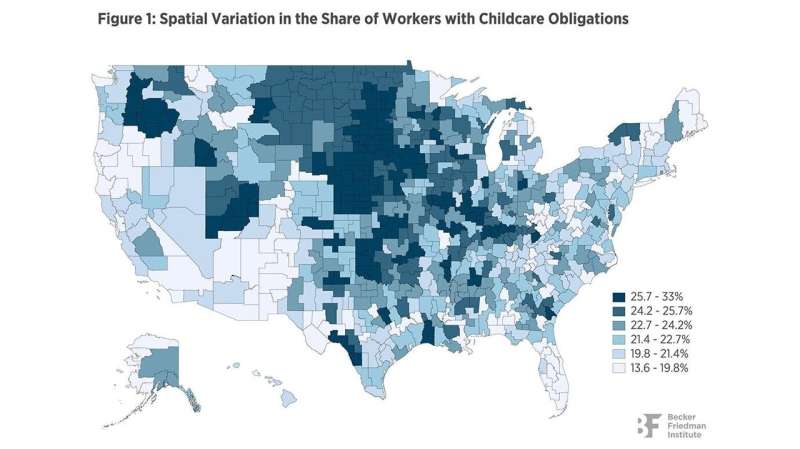Plans to reopen economy must consider childcare obligations

As states and cities design policies meant to "re-open" the economy, strategies for childcare arrangements should rank as an important consideration. Even if residents are able to return to their workplaces, much of the U.S. labor force could face obstacles if their childcare options remain closed.
According to economists at the University of Chicago Booth School of Business, nearly one-third of U.S. workers live in a household with a child under 14—which means about 50 million workers must consider childcare obligations when returning to work.
That was one finding from a new paper co-authored by Assoc. Prof. Jonathan Dingel and Prof. Joseph S. Vavra, along with Christina Patterson, who will join Chicago Booth as an assistant professor in July.
"Of course, many workers with children at home are not sole caregivers," said Dingel, who studies spatial variation in economic activity. "Workers who live in a household with another non-working adult—such as a partner who is not employed, a retired parent or in-law, or an older child above 18 who lives at home—can likely return to work while another household member addresses their childcare needs. Unfortunately, not all households have that option."
The authors stressed that their research is not an attempt to evaluate the public health benefits of school closures, or make an assessment of when to reopen schools. Rather, their work underscores the need for policymakers to consider the implications of returning to school when they design back-to-work plans.
For example, the researchers found that 21% of all workers have children under 14 years old but do not live with an available caregiver, defined as another non-employed adult member of the household.
Their paper also revealed that, among workers with childcare requirements, 30% have children who are all under 6. Those numbers suggest that opening daycare centers alone would help, but would still leave more than two-thirds of the barriers to returning to work.

The obstacles that childcare imposes during the COVID-19 crisis is similar across industries. The share of workers without a same-household caregiver only ranges from 18% in transportation to 25% in education and health care.
"Childcare-related constraints imposed by school closings should feature prominently in discussions of reopening the economy," said Vavra, whose research examines the effects of regional business cycles. "While there is scope for a large rebound in employment even if schools and daycares remain closed, the economy will remain 17 million workers short of normal employment in this scenario. Furthermore, many of those working when schools are closed will only be able to do so if a spouse or partner or who would typically be working instead remains home."
Bottom line: The authors show that the longer school closures persist into the recovery of the economy, the greater the burden on those workers with young children and no obvious childcare options.
More information: Childcare Obligations Will Constrain Many Workers When Reopening the US Economy: bfi.uchicago.edu/working-paper … ning-the-us-economy/
Provided by University of Chicago




















